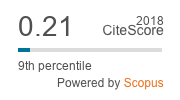Por Que Não Modelos Prototípicos?
Mots-clés :
Categorização, Protótipos, ConceitosRésumé
RESUMO - Este artigo discute alguns problemas apresentados pelos modelos prototípicos em categorização. Inicialmente é demonstrado que a forma pela qual são geradas categorias artificiais leva a uma vantagem estatística para protótipos, e se discute a noção de abstração de atributos na aquisição de categorias. A seguir, apresenta-se o problema da separabilidade linear como evidência de que modelos prototípicos fracassam ao predizer a facilidade de aprendizagem de diferentes tipos de categorias. Problemas evidenciados por categorias complexas são também analisados. Finalmente, a questão dos efeitos de contexto é levantada mostrando a inflexibilidade dos modelos prototípicos em relação à variabilidade contextual.
Téléchargements
Références
information in concepts. Memory & Cognition, 10, 82-93.
Barsalou, L.W. (1985). Ideais, central tendency, and frequency of
instantiation as determinant of graded structure in categories.
Journal of Experimental Psychology: Learning, Memory and
Cognition, 11, 629-654.
Barsalou, L.W. & Ross, B.H. (1986). The roles of automatic and
strategic processing in sensiti vity to superordinate and property
frequency. Journal of Experimental Psychology: Learning,
Memory, and Cognition, 12, 116-134.
Bransford, J.B. & Franks, J.J. (1971). The abstraction of linguistic
ideas. Cognitive Psychology, 2, 331-350.
Buss, D.M. & Craik, K.M. (1983). The act frequency approach to
personality. Psychological Review, 90, 105-126.
Cantor, N., Mischel, W. & Schwartz, J.C. (1982). A prototype
analysisof psychological situations. Cognitive Psychology, 14,
45-77.
Cherniak, C. (1984). Prototypicality and deductivereasoning. Journal
of Verbal Learning and Verbal Behavior, 23, 625-642.
Eysenck, M.W. & Keane, M.T. (1992). Cognitive psychology - A
student's handbook. Hillsdale: Lawrence Erlbaum Associates.
Fehr, B. & Russel, J.A. (1984). Concept of emotion viewed from a
prototype perspective. Journal of Experimental Psychology:
General, 113, 464-486.
Franks, J.J. & Bransford, J.D. (1971). Abstraction of visual patterns.
Journal of Experimental Psychology, 90, 65-74.
Gênero, N. & Cantor, N. (1987). Exemplar prototype and clinicai
diagnosis: Toward a cognitive economy. Journal of Social and
Clinicai Psychology, 5, 59-78.
Hampton, J.A. (1981). An investigation of the nature of abstract
concepts. Memory and Cognition, 9, 149-156.
Hampton, J.A. (1991). The combination of prototype concepts. Em
P.J. Schwanenflugel (Org.), The psychology ofword meanings
(pp. 91-116). Hillsdale: Lawrence Erlbaum Associates.
Herrmann, D.J., Chaffin, R.J.S., Conti, G., Peters, D. & Robbins,
P.H. (1979). Comprehension of antonomy and the generality of
categorization models. Journal of Experimental Psychology:
Human Learning and Memory, 5, 585-597.
Homa, D. (1978). Abstraction of ill-defined form. Journal of Experimental
Psychology: Human Learning and Memory, 4, 406-
416.
Homa,D.,Cross,J.,Cornell,D.,Goldman,D.&Shwartz,S.(1973).
Prototype abstraction and classification of new instances as a function of number of instances dcfining the prototype. Journal
ofExperimental Psychology, 101, 116-122.
Homa, D., Sterling, S. & Trepei, L. (1981). Limitations of exemplar-
based generalization and the abstraction of categorical
information. Journal of Experimental Psychology: Human
Learning and Memory, 7, 418-439.
Homa, D. & Vosburgh, R. (1976). Category breath and the abstraction
of prototypical information. Journal of Experimental Psychology:
Human Learning and Memory, 2, 322-330.
Horowitz, L.M., Wright, J.C., Lowenstein, E. & Parad, H.W.
(1981). The prototype as a construct in abnormal psychology:
A method for deriving prototypes. Journal of Abnormal Psychology,
90, 568-574.
Janczura, G.A. (1994). Associative slrength and frequency of instantiation
as determinants of typicality effects. Tese de Doutorado.
University of South Florida, Tampa, USA.
Kemier-Nelson, D.G. (1984). The effect of intention on what
concepts are acquired. Journal of Verbal Learning and Verbal
Behavior, 23, 734-759.
Lakoff, G. (1986). Women, fire, and dangerous things: Whatcategories
tell us about the nature ofthought. Chicago: University
of Chicago Press.
Lakoff, G. (1989). Cognitive models and prototype theory. Em U.
Neisser (Org.), Concepts and conceptual development: Ecological
and intellectual factors in categorization (pp.63-100).
Cambridge: Cambridge University Press.
Madeira, M.J.P. (1990). O papel dos protótipos no tratamento dos
conjuntos fluidos em adultos e crianças. PSICO, 20, 45-67.
Malt, B. (1989). An on-line investigation of prototype and exemplar
strategies in classification. Journal of Experimental Psychology:
Learning, Memory, and Cognition, 15, 539-555.
Malt, B.C. & Smith, E.E. (1984). Correlated properties in natural
categories. Journal of Verbal Learning and Verbal Behavior,
23, 250-269.
Medin, D.L. & Schaffer, M.M. (1978). Context theory of classification
learning. Psychological Review, 85, 207-238.
Medin, D.L. & Schwanenflugel, P.J. (1981). Linear separability in
classification learning. Journal of Experimental Psychology:
Human Learning and Memory, 7, 355-368.
Neisser, U. (1979). The concept of intelligence. lntelligence, 3,
217-227.
Osherson, D. & Smith, E. (1981). On the adequacy of prototype
theory as a theory of concepts. Cognition, 9, 35-48.
Posner, M.I. & Keele, S.W. (1968). On the gênesis of abstract ideas.
Journal of Experimental Psychology, 77, 353-363.
Reed, S.K. (1972). Pattern recognition and categorization. Cognitive
Psychology, 3, 382-407.
Rosch.E. (1975). Cognitive rcpresentationsof semantic categories.
Journal of Experimental Psychology: General, 104, 192-233.
Rosch, E. & Mervis, C.B. (1975). Family resemblances: Studies in
the internai structure of categories. Cognitive Psychology, 7,
533-605.
Roth, E.M. & Shoben, E.J. (1983). The effect of context on the
structure of categories. Cognitive Psycliology, 15, 346-378.
Samuel, A.G. (1982). Phonetic prototypes. Perception and Psychophysics,
57,307-314.
Sebetsyen, G.S. (1962). Decision-making processes in pattern recognition.
New York: Macmillan.
Smith, E.E. & Medin, D.L. (1981). Categories and concepts. Cambridge,
MA: Harvard University Press.
Strange, W., Kenney, T., Kessel, F.S. & Jenkins, J.J. (1970).
Abstraction over time of prototype from distortions of random
dot patterns: A replication. Journal of Experimental Psychology,
83, 508-510.
Zadeh, L.A. (1965). Fuzzy sets. Information and Control, 8, 338-
353.
Zadeh, L.A. (1982). A note on prototype theory and fuzzy sets.
Cognition, 72,291-297.
Whitney, P., McKay, T. & Kellas, G. (1985). Semantic activation
of noun concepts in context. Journal of Experimental Psychology:
Learning, Memory, and Cognition, 11, 126-135.



